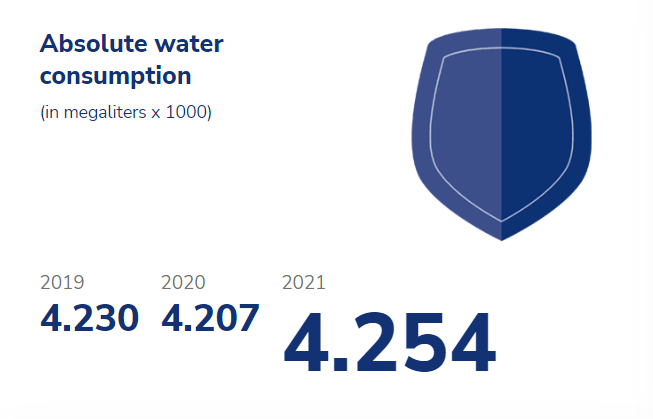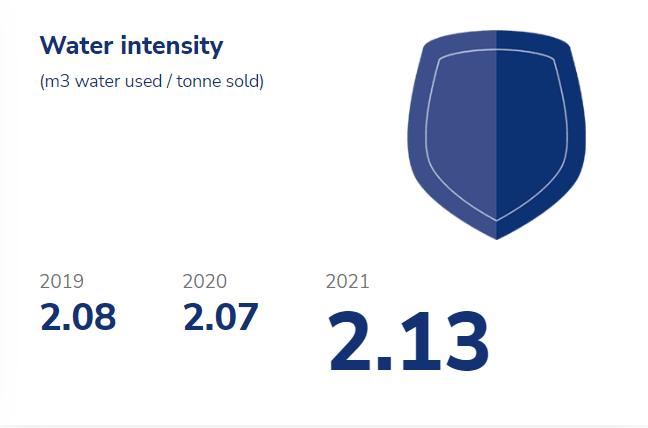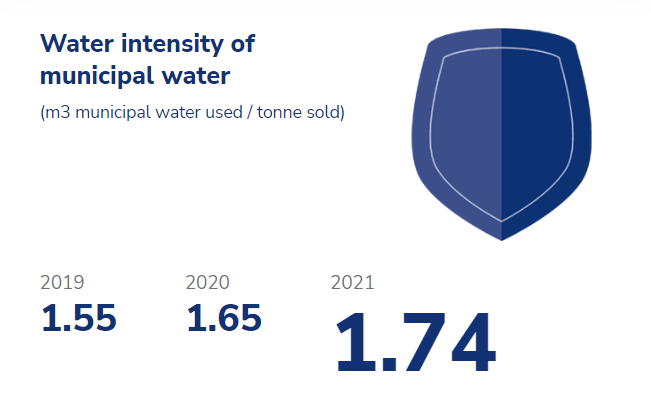Water is an important resource for all of Sedef’s production processes, but also for a sustainable planet. Therefore, Sedef is committed to minimising water usage. All production sites report monthly on water efficiency and are benchmarked against best practices. When sites show a wide divergence from the benchmark, we focus on how to reduce water usage to close the gap.
Our objective is to reduce our use of municipal water from 1.75 m3 per tonne sold in 2021 to a maximum of 1.65 in 2022 and ultimately 1.2 by 2030. Although a few sites have a ground water source, the scope of our objective is on the use of municipal water, as we want to minimise the use of available drinking water. Reductions in water intensity should be achieved by saving programmes wherever appropriate.
Our activities are focused on minimising the use of municipal water. This is part of what we call ‘good housekeeping’. When we acquire new production facilities, like Adriaens, we evaluate them for their sustainability advantages. Adriaens, for example, already has a wastewater treatment facility and re-uses part of the water needed. In Groenlo, we are investigating whether we can use groundwater from existing water wells to use in our secondary processes, such as cleaning lorries, to partially replace municipal water.
In Crailsheim, we invested for a new wastewater treatment system with better efficiency and performance. In Apeldoorn, we installed a water recycling system for water used in the slaughter process, which reduces water consumption by 30 m3 per day.



The 2021 target was to use a maximum of 1.55 m3 municipal water per tonne sold. We ended 2021 on an average of 1.74 m3 per tonne sold. This increase is due to having more production locations that have to be cleaned while producing a lower sales volume.The 2021 target was to use a maximum of 1.55 m3 municipal water per tonne sold. We ended 2021 on an average of 1.60 m3 per tonne sold. This is a reduction compared to the 1.60 m3 per tonne sold in 2020, but not enough to reach our target.
© 2010 – 2023 Sedef SA. All right reserved.